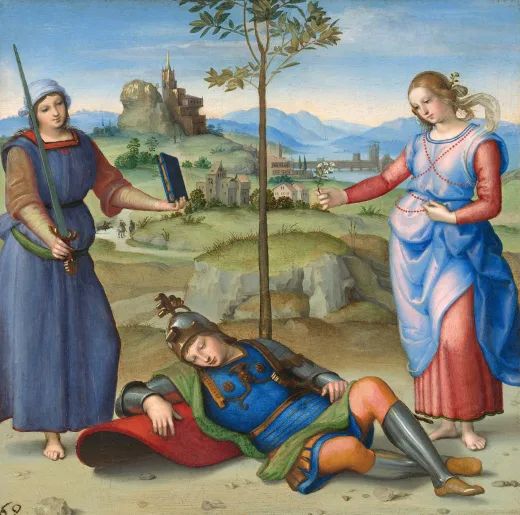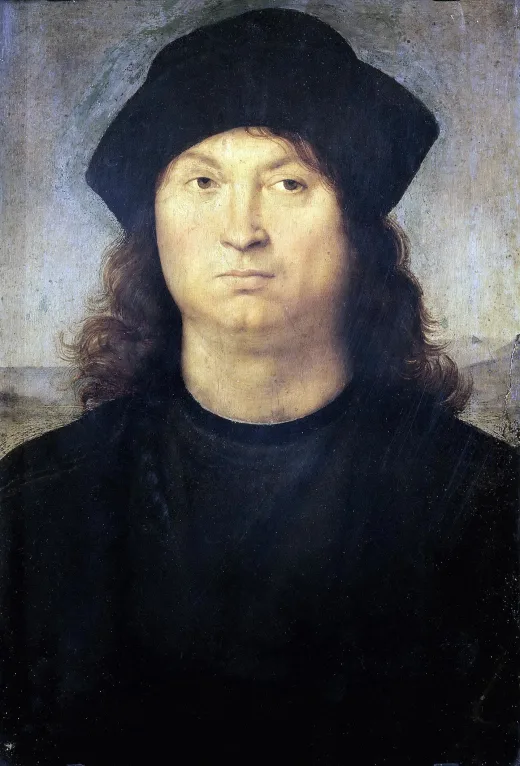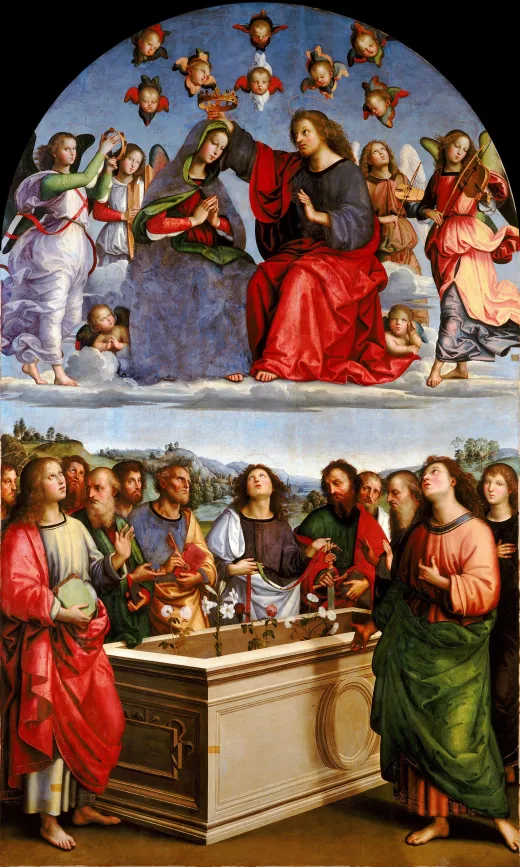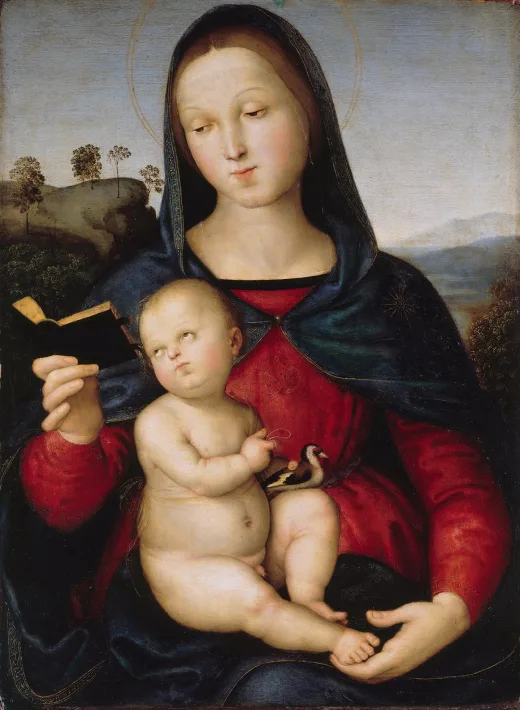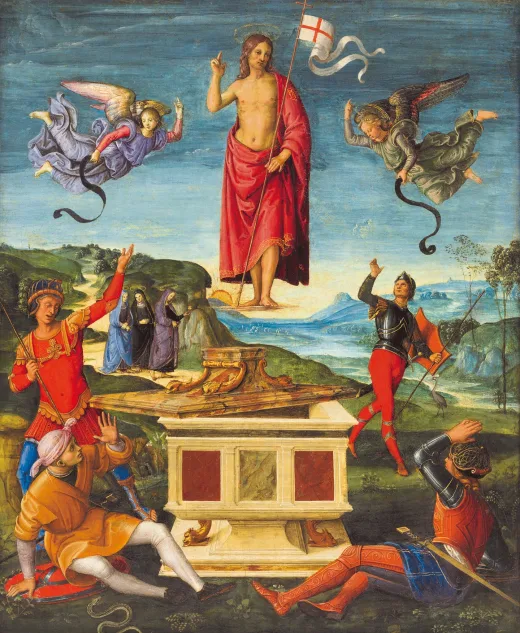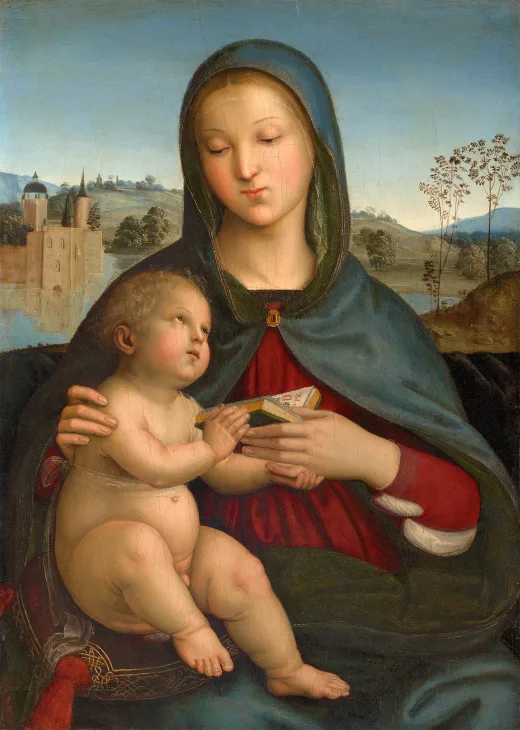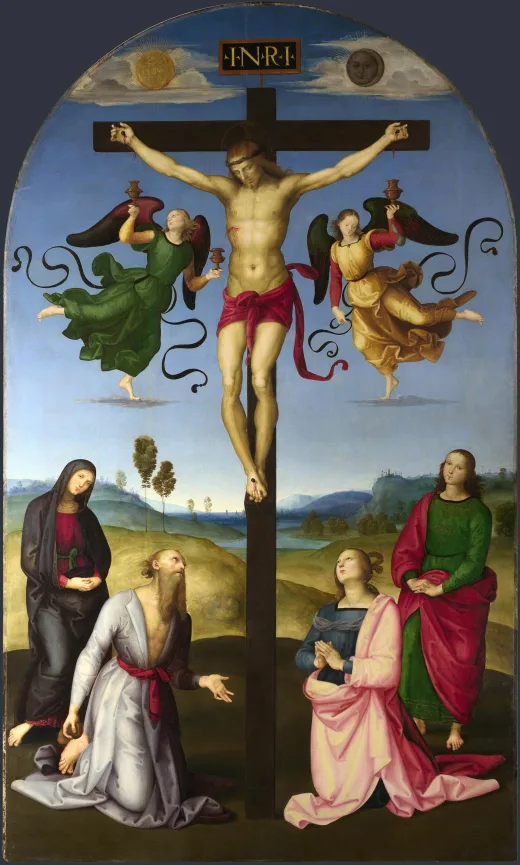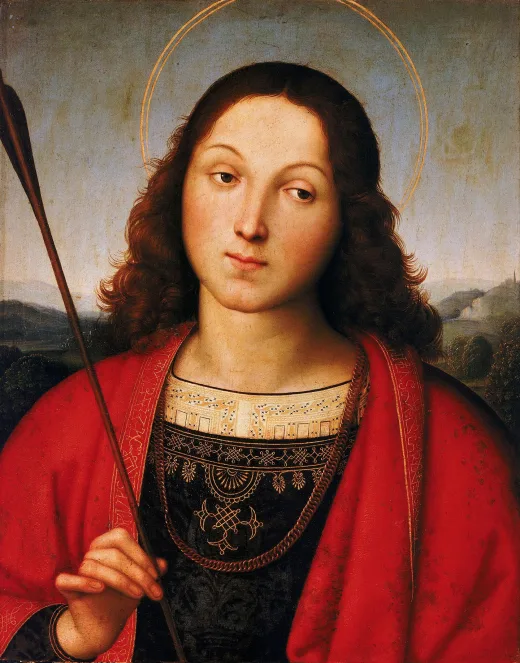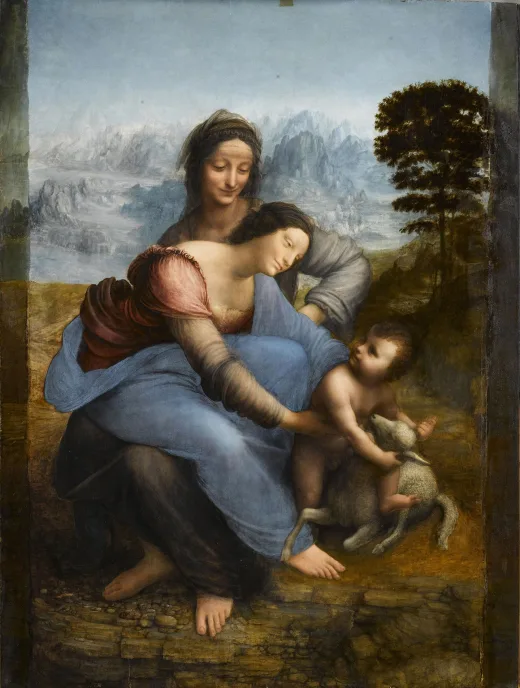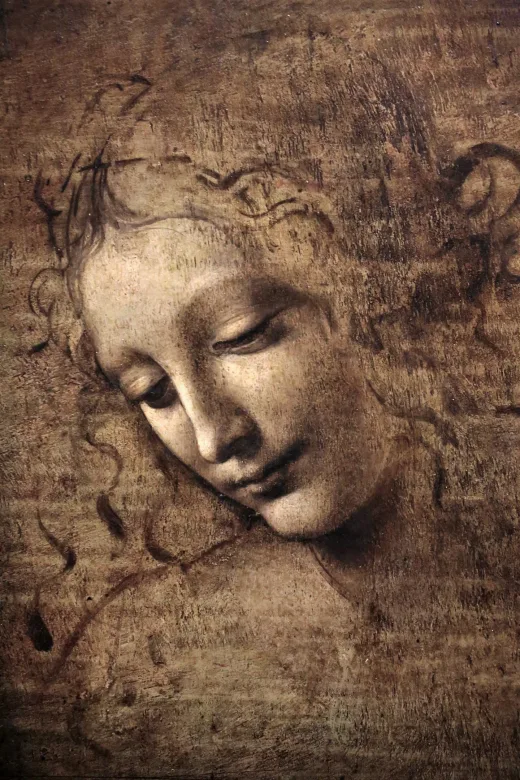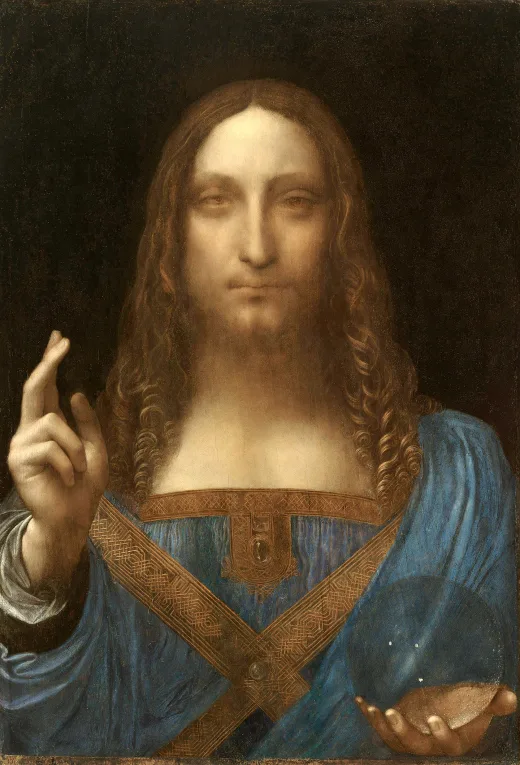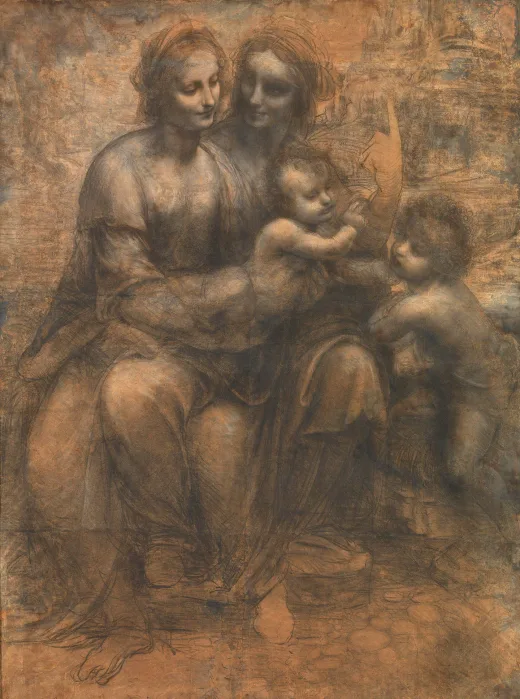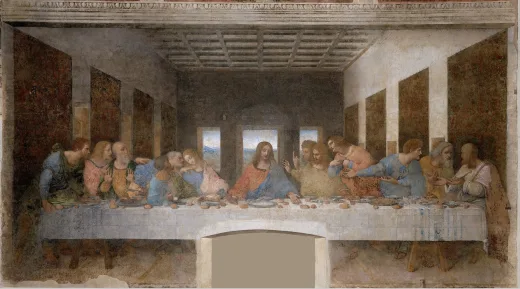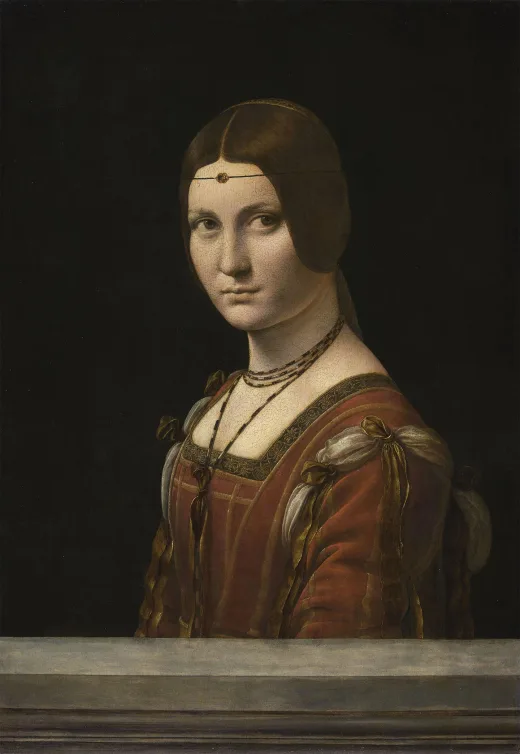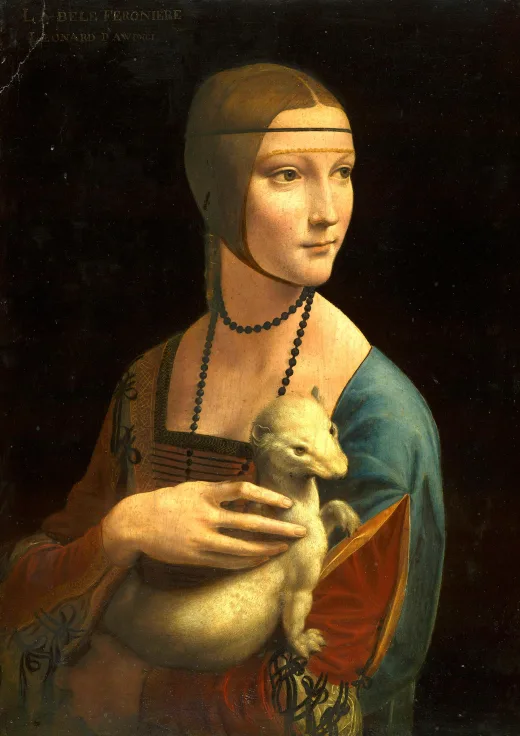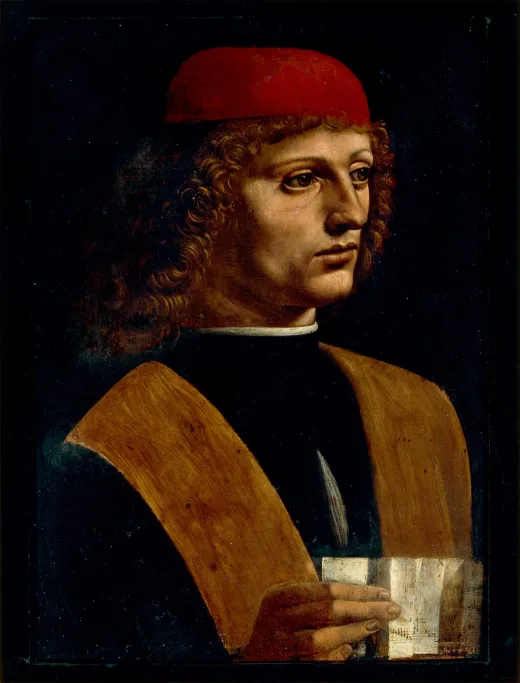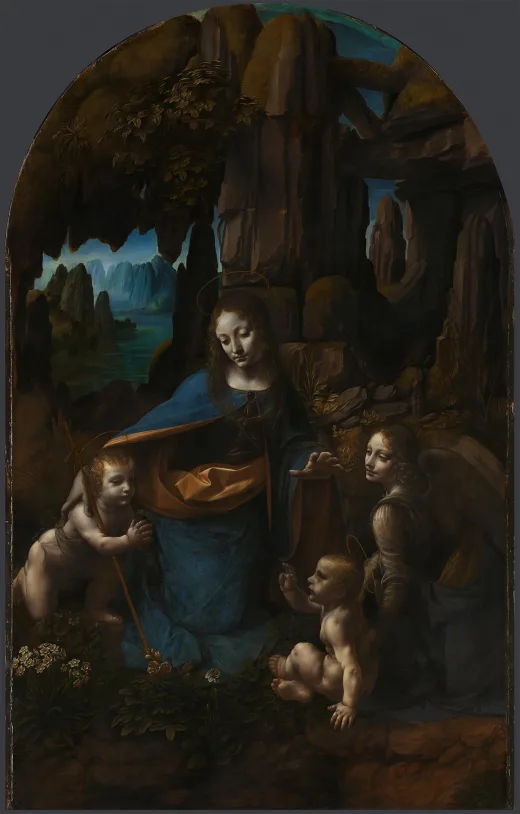拉斐尔作品《圣母的婚礼》高清图片
原图尺寸:2779×4115像素(72 DPI)高清图
下载原图消耗2艺点
文件大小:27.17 MB
下载格式: TIFF / ZIP
作品名称:圣母的婚礼
The Marriage of the Virgin
作品作者:拉斐尔 (Raphael)
创作时间:1504年
作品风格:文艺复兴盛期
原作尺寸:174×121厘米
作品材质:圆头板油画
收藏位置:米兰布雷拉美术馆
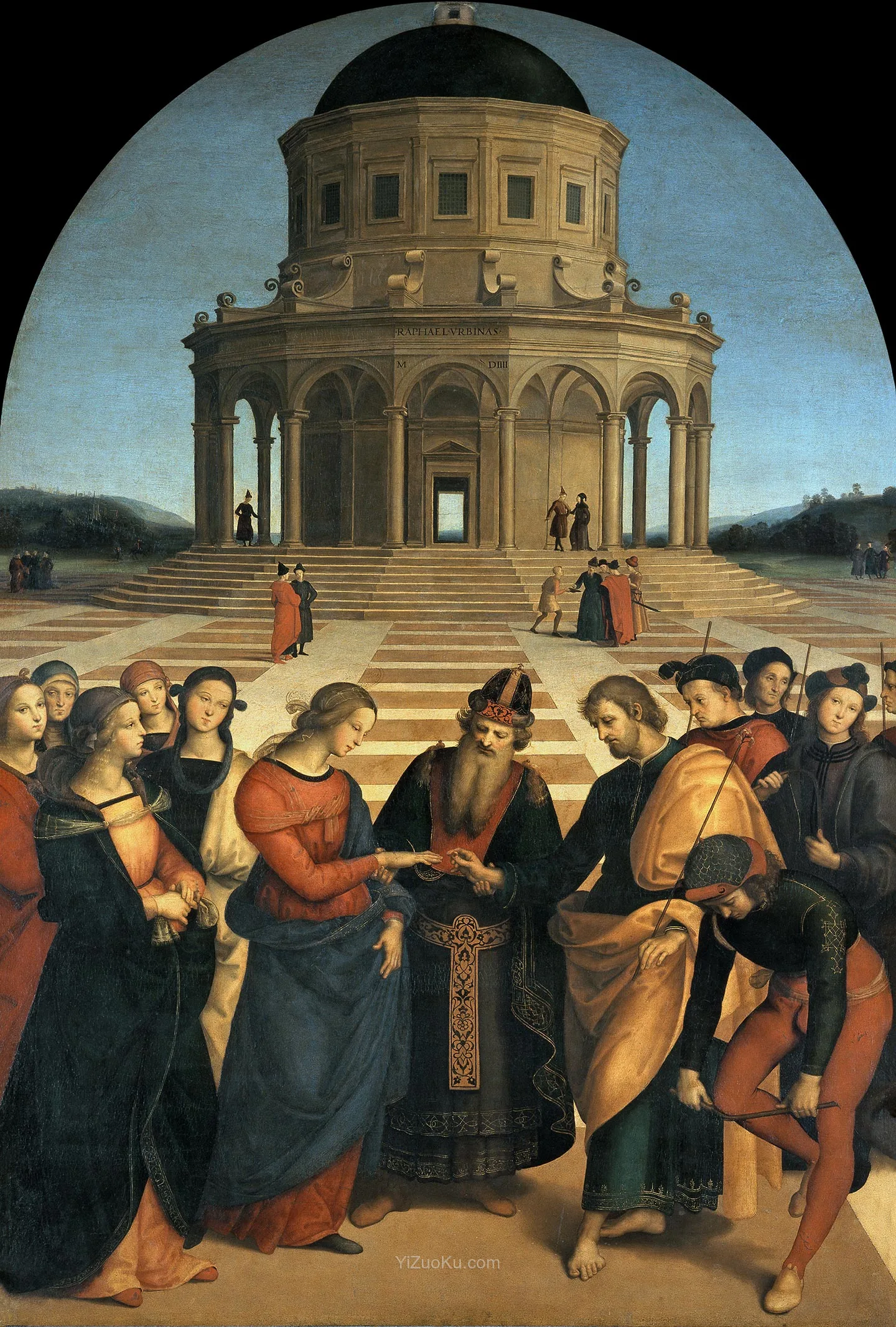
作品简介
《圣母的婚礼》(意大利语:Lo Sposalizio)是意大利文艺复兴盛期艺术大师拉斐尔创作于1504年的油画作品。这幅画作最初为卡斯泰洛城圣方济各教堂绘制,描绘了圣母玛利亚与圣约瑟的婚礼场景,现永久收藏于米兰布雷拉美术馆。
15世纪末,卡斯泰洛城的艺术赞助人原本委托拉斐尔的老师佩鲁吉诺创作三幅作品。由于佩鲁吉诺无法履约,最终由年轻的拉斐尔完成了这些委托。《圣母的婚礼》是该系列的最后一件作品,明显受到佩鲁吉诺同名作品的启发。根据画作上的签名和日期,可以确定拉斐尔在1504年完成了这一创作。
The Marriage of the Virgin, also known as Lo Sposalizio, is an oil painting by the Italian High Renaissance artist Raphael. Completed in 1504 for the Franciscan church of San Francesco, Città di Castello, the painting depicts a marriage ceremony between Mary and Joseph. It changed hands several times before settling in 1806 at the Pinacoteca di Brera.
In the later years of the 15th century, patrons in Citta di Castello sent three commissions to Raphael's teacher Pietro Perugino which, in Perugino's absence, were completed by Raphael. The Marriage of the Virgin, featuring the theme of the Marriage of the Virgin, was the last of these. Evidently inspired by one of Perugino's paintings, also known as Marriage of the Virgin, Raphael finished his own work, according to the date placed next to his signature, in 1504.
This particular work was commissioned by Filippo degli Albezzini for his family's side altar in the church of San Francesco. It remained in its original home until General Giuseppe Lechi led forces to Città di Castello to liberate it from Austrian occupation, when the painting was gifted to (or perhaps demanded by) the general. "Restoring Raphael" in the Cambridge Companion to Raphael (2005) reports that the painting remained with Lechi to his death in 1804, but Lechi died in 1836. The Cyclopedia of Painters and Paintings states rather that Lechi sold the piece in 1801 to one Giacomo Sannazaro, who himself sold the piece in 1804 to the Ospedale Maggiore in Milan. By whatever means it arrived there, it was in the possession of the hospital for a short time, as in 1806 the hospital sold it to the Italian state for 53,000 francs. It has since then been displayed in the Pinacoteca di Brera, in spite of an 1859 proposal to gift the painting to France after that country's army had entered Milan, and liberated them from Austrian occupation.
Through these various relocations, the painting was damaged. The panel had several cracks in the upper half, while there was rippling and bowing throughout. Italian artist Giuseppe Molteni, retained to repair it in November 1857, chose to preserve the panel rather than transfer the painting to canvas and spent months flattening the panel and hydrating it to overcome the damage of desiccation. This decision on the part of Molteni has permitted 20th-century art historians to use infrared reflectography to study the underdrawing beneath the completed art work. Molteni also undertook to clean the surface of the painting, which had been subjected to restoration before. He did not clean aggressively, as he wanted to be sure that elements of the original painting were preserved. The Cyclopedia of Painters and Paintings indicates that the painting is "somewhat discoloured."

